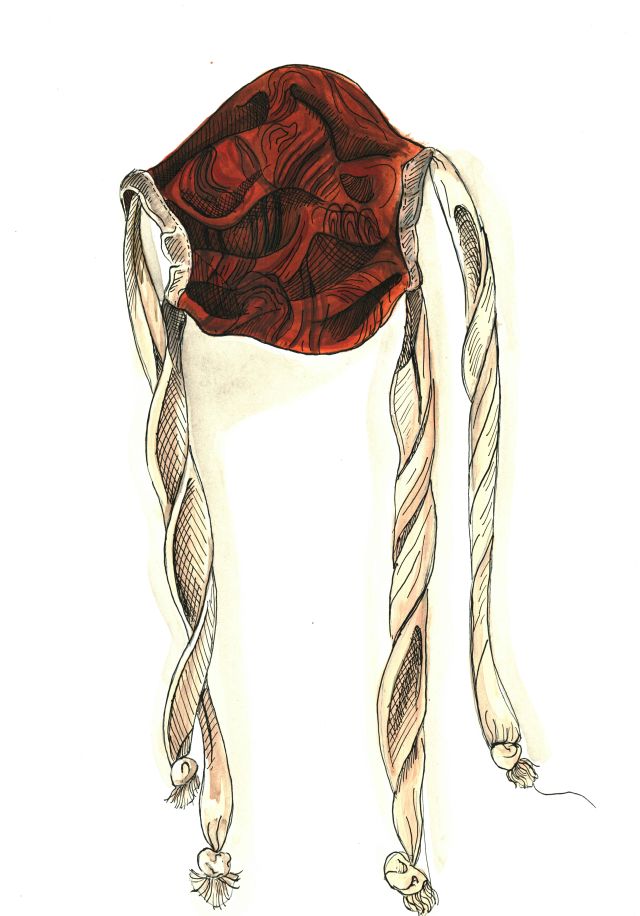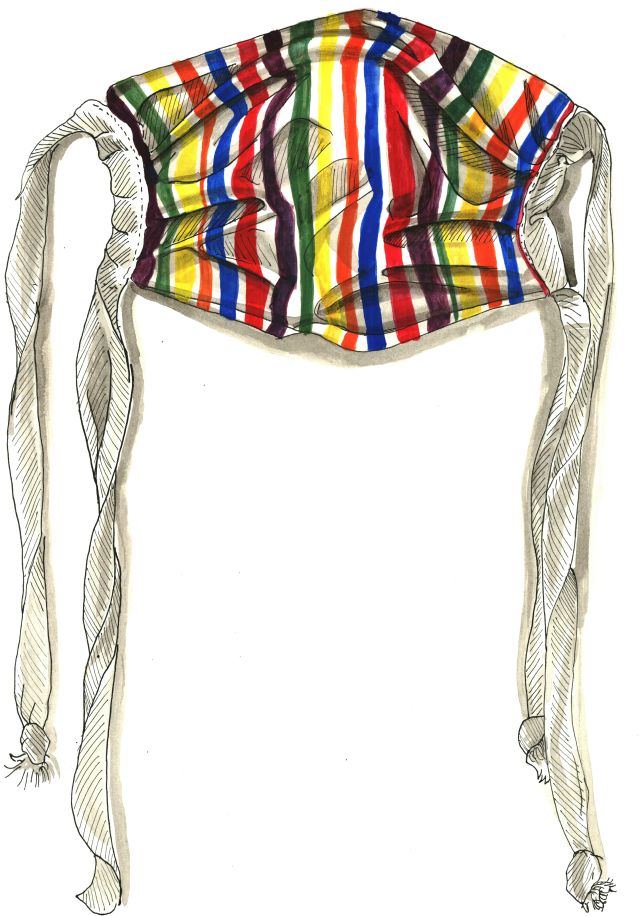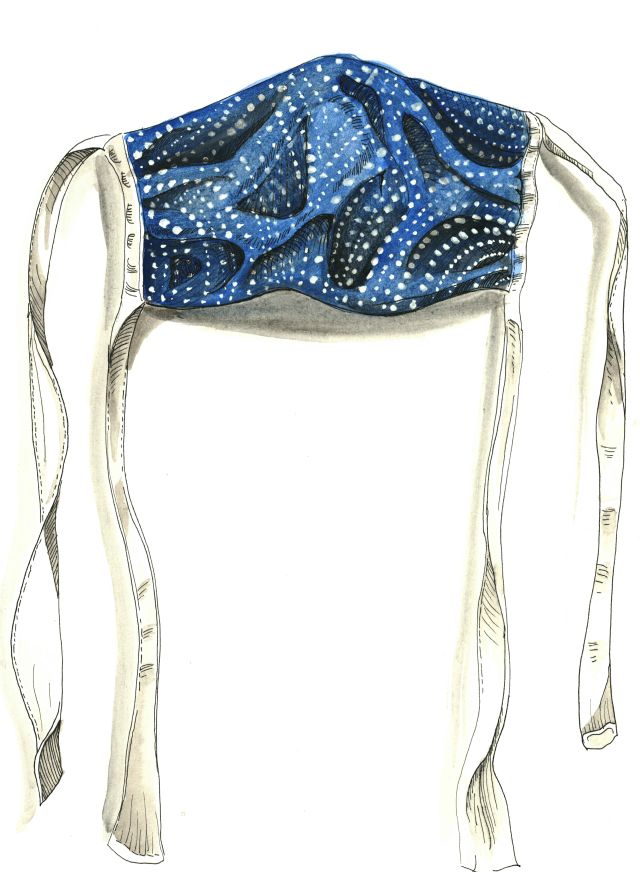I’ve been in a holding pattern since finishing my written exams on August 27 because I still need to complete the oral component, which is happening this Wednesday. In the meantime, I’ve been catching up on nonacademic projects that I’d sidelined while reading for comps. My main website, for instance, now features a brand-new page about my curatorial and academic writing in the main menu. On this page, I’ve not only included links to open-access materials published online, but also provided downloadable PDFs for all my exhibit brochures and other print-only materials.
Another important project that I’ve recently made available is more personal. This is the online exhibit Facemasks: Drawings of COVID-19 Face Coverings, the latest addition to my Digital Projects page, and it’s what I’d like to talk about today.
This exhibit is a collection of drawings I’ve made depicting various COVID-19 facemasks. I initially started making these drawings because sketching has always been an important way for me to process my thoughts and emotions. I initially had little desire to draw because I felt overwhelmed, but I finally took an interest in sketching again when I began taking a closer look at the facemasks in our house. Brandon had brought home several cloth facemasks made by employees working in the textiles department at Colonial Williamsburg, and over time, I became interested in their visual qualities. One day, I draped one of the masks over some pushpins I’d applied to the wall in my study, and started sketching. I liked this display method because it mimicked the effect of them being worn while also suggesting the appearance of pinned butterflies and other natural history displays. In keeping with those presentations, I decided to draw the masks in a naturalistic way, with an emphasis on their physical presence as conveyed through modeling and cast shadows.
I drew the masks using pen and ink with ink wash and paint, arguably my favorite way to sketch. In drawing the masks, I thought about them primarily as sites of labor and expression. I wondered about the choices made in fabric selection, the time needed to complete them, the labor that I had been spared by having these masks available for use, and whether I would ever find out who made them. I also thought about facemasks within contemporary American visual culture, and their associations with public health, individual freedom, distrust of authority, and personal expression. Through these drawings, in other words, I began to process my feelings about the pandemic.

Around the time I started drawing facemasks, I came up with the idea of an online exhibit. As a curator, I’ve been following how museums have reconfigured their collections through online exhibits, and while I’m currently not working in a museum environment, I wanted to use my previous experiences as a museum professional to explore new ways of sharing material. Since I knew there would be an online component to the project, I also decided to expand my collection by inviting my contacts on social media to send photos of their masks. I also encouraged participants to send any text they wanted to include about their mask in the form that worked best for them, whether as a caption, poem, short story, or something else. The captions that you see come directly from the users who submitted these images, and is used with their permission.

Admittedly this took longer than anticipated. Soon after I conceptualized the project I developed tendonitis in my dominant hand and had to halt all creative activity for several weeks. As much as I wanted to get on with the exhibit, I knew working through the injury would only make it worse, so I reluctantly put the project on hold until my hand healed (for blog posts and comps notes, I actually switched to voice typing). I’ve since been able to resume my usual activities, albeit with greater attention to rest and stretching.
Once I finished my drawings, I turned them into high-quality JPGs using a fantastic portable scanner that Brandon had gotten me for Christmas a couple years ago (I also used it to create the PDFs on my writing page). I created the actual exhibit on Omeka because it’s a popular platform that I’ve been wanting to learn how to use. During a few afternoons, I figured out how to add items, create collections, and from those repositories, form exhibits. Like a lot of digital platforms I’ve used, I learned through trial and error, but between my own tinkering and the online tutorials available, I figured it out enough to create this project.
Facemasks in its current form is an intimate project with eight different masks and stories on view. I had initially hoped for more submissions, but I’ve also come to appreciate its small scale, given the importance of intimacy in digital humanities projects. As digital scholars such as Roopika Risam and Jacqueline Wernimont argue, small projects provide a crucial counterpoint to large-scale undertakings because they remind us that quantity alone is not the sole measure of quality or significance. Given the emphasis on big numbers with pandemic research, it’s important to counterbalance those statistics with more intimate data that highlight the humanity of the pandemic.

Not that the project has to end here. On the contrary, new submissions are always welcome. If you would like to participate, all you need to do is take a picture of your mask and email it to scwoodbury@gmail.com, along with any text you’d like to see featured alongside your mask. Submit your thoughts as a caption, a short story, a poem, a song, or any other form that suits you. You may also include any information you feel comfortable sharing about yourself, or remain anonymous. I’ll draw the photo you send me and add it to the site, along with any other information you choose to include.
I initially made this project to work through my own feelings, but as a space for sharing, I hope that it will also benefit other people.

